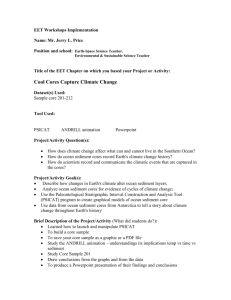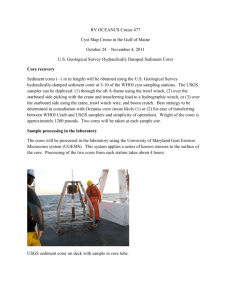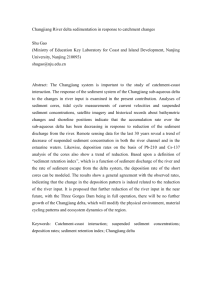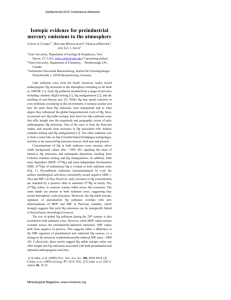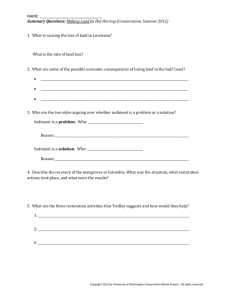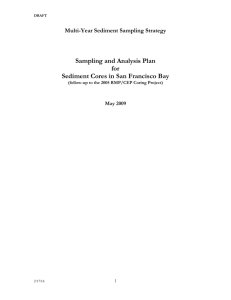7 - University of San Diego
advertisement
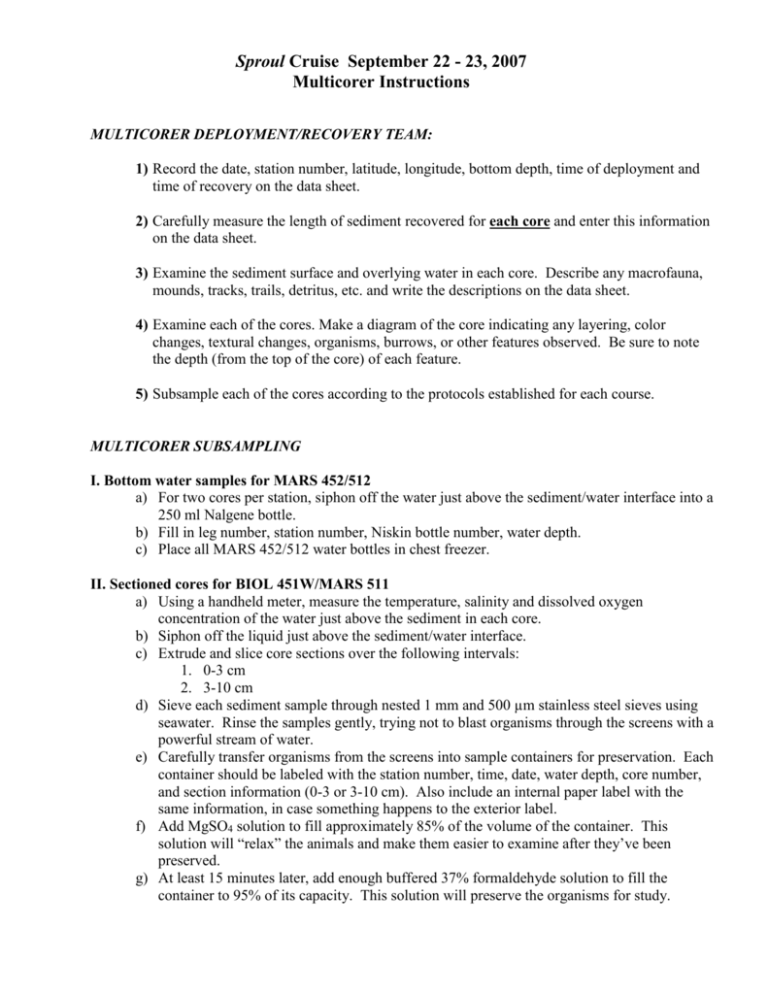
Sproul Cruise September 22 - 23, 2007 Multicorer Instructions MULTICORER DEPLOYMENT/RECOVERY TEAM: 1) Record the date, station number, latitude, longitude, bottom depth, time of deployment and time of recovery on the data sheet. 2) Carefully measure the length of sediment recovered for each core and enter this information on the data sheet. 3) Examine the sediment surface and overlying water in each core. Describe any macrofauna, mounds, tracks, trails, detritus, etc. and write the descriptions on the data sheet. 4) Examine each of the cores. Make a diagram of the core indicating any layering, color changes, textural changes, organisms, burrows, or other features observed. Be sure to note the depth (from the top of the core) of each feature. 5) Subsample each of the cores according to the protocols established for each course. MULTICORER SUBSAMPLING I. Bottom water samples for MARS 452/512 a) For two cores per station, siphon off the water just above the sediment/water interface into a 250 ml Nalgene bottle. b) Fill in leg number, station number, Niskin bottle number, water depth. c) Place all MARS 452/512 water bottles in chest freezer. II. Sectioned cores for BIOL 451W/MARS 511 a) Using a handheld meter, measure the temperature, salinity and dissolved oxygen concentration of the water just above the sediment in each core. b) Siphon off the liquid just above the sediment/water interface. c) Extrude and slice core sections over the following intervals: 1. 0-3 cm 2. 3-10 cm d) Sieve each sediment sample through nested 1 mm and 500 µm stainless steel sieves using seawater. Rinse the samples gently, trying not to blast organisms through the screens with a powerful stream of water. e) Carefully transfer organisms from the screens into sample containers for preservation. Each container should be labeled with the station number, time, date, water depth, core number, and section information (0-3 or 3-10 cm). Also include an internal paper label with the same information, in case something happens to the exterior label. f) Add MgSO4 solution to fill approximately 85% of the volume of the container. This solution will “relax” the animals and make them easier to examine after they’ve been preserved. g) At least 15 minutes later, add enough buffered 37% formaldehyde solution to fill the container to 95% of its capacity. This solution will preserve the organisms for study. III. Sectioned cores for MARS 450/510 a) Choose two cores from opposite sides of the multicorer and a third core adjacent to one of the first two. b) For each of the three cores, siphon off the liquid just above the sediment/water interface. Transfer the liquid into a labeled 250 ml Nalgene bottle for preservation. c) FOR THE TWO OPPOSITE CORES: 1. Extrude and slice each of the two opposite cores over the following intervals: 1. 0-1 cm* 2. 1-2 cm* 3. 2-3 cm* 4. 3-4 cm 5. 4-5 cm* 6. 5-6 cm 7. 6-7 cm* 8. 7-10 cm 9. 10-12 cm 10. every 2 cm to the bottom of the core 2. For the sections from 0-1, 1-2, 2-3, 4-5, and 6-7 cm* i. Divide each whole round subsample in half. ii. Place half of the subsample in a labeled 250 ml Nalgene bottle for preservation. Don’t fill the bottle more than halfway with sediment and don’t pack the sediment tightly. iii. Place the other half in a labeled plastic WhirlPak bag. 3. For the other sections i. Place each whole round in a labeled plastic WhirlPak bag. 4. Label all bags and bottles with the course number, date, leg #, core #, depth interval, and a description of the contents, e.g. “sediment”. Place small WhirlPak bags from each core into a labeled one-gallon Ziploc bag. 5. Preserve the sediment sample in the Nalgene bottles with buffered formaldehyde solution containing Rose Bengal. d) FOR THE ONE ADJACENT CORE: 1. Extrude and slice the adjacent core at 1 cm intervals to the bottom of the core. Place each whole round in a labeled plastic WhirlPak bag.
